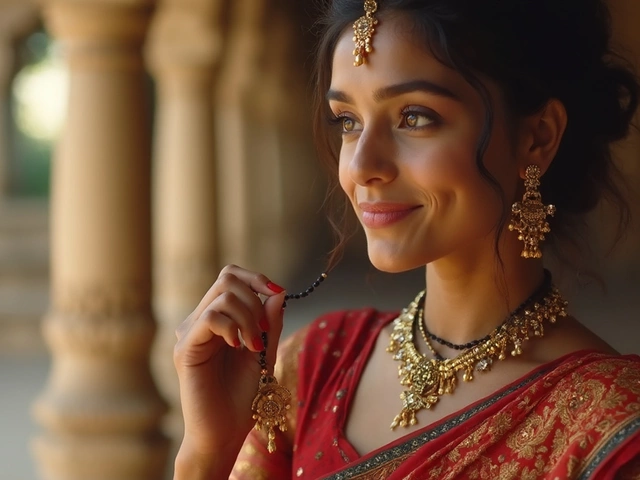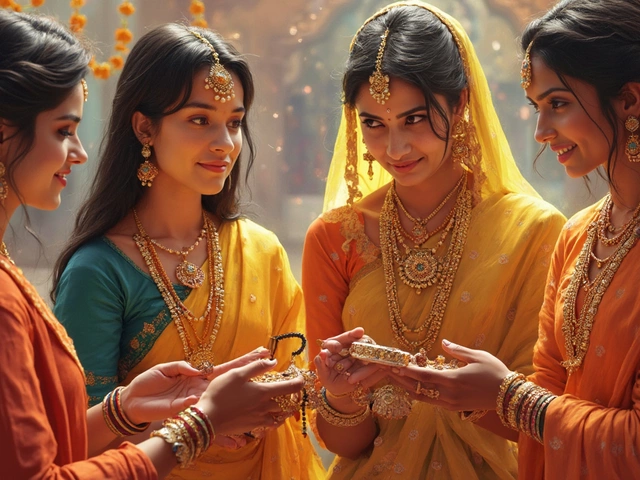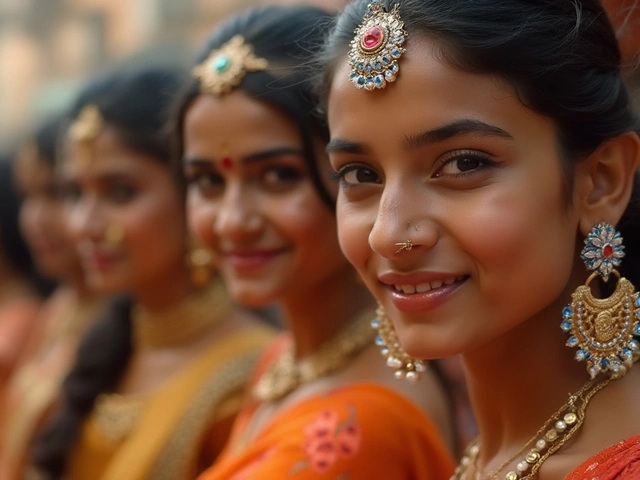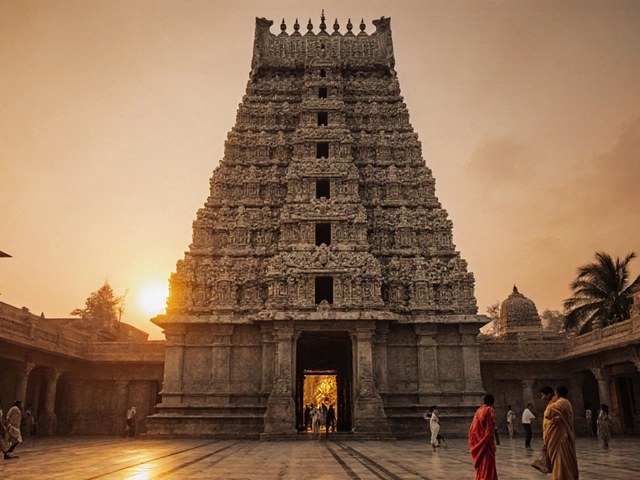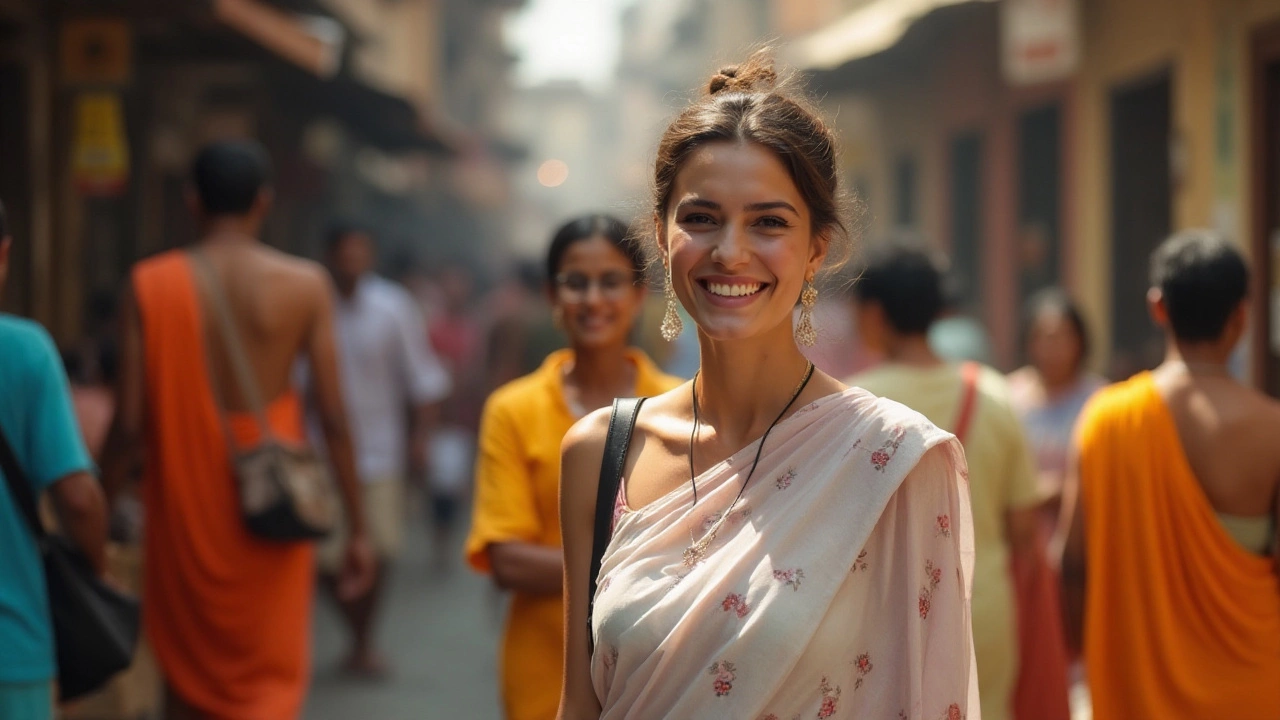
Traveling to India can be an exhilarating experience, filled with new cultures, vibrant colors, and diverse traditions. However, when it comes to dressing for the journey, being prepared is key. Not only can the climate vary dramatically across its vast expanse, but cultural norms also influence what's considered appropriate attire.
This guide will walk you through some essential tips to ensure you're both comfortable and respectful while exploring this incredible country. From selecting breathable fabrics to understanding the importance of modesty, we'll unravel the mysteries of what makes an outfit perfect for the Indian adventure.
- Understanding Indian Culture and Climate
- Choosing Appropriate Fabrics and Clothing
- Essential Accessories for Travel
- Embracing Local Fashion Trends
Understanding Indian Culture and Climate
When embarking on a journey across the Indian subcontinent, understanding the nuances of its culture is as essential as determining what clothes to pack. India is a vast country divided into 28 states and 8 union territories, each steeped in its own unique visual and cultural tapestry. This diverse cultural landscape is mirrored in the nation's climate, which ranges from the alpine cold of the northern Himalayas to the swampy heat of the southern coastal regions. Thus, an American planning a trip to India must consider both these elements when choosing their travel apparel.
The culture here places a significant amount of emphasis on modesty, especially in rural areas where traditions are more strictly upheld. Visitors will discover that dressing modestly earns respect and allows for easier assimilation into local communities. According to a study published by the Ministry of Tourism, "respectfully dressed tourists often find it easier to receive guidance and hospitality from locals." The diversity in customs is matched by regional differences in climate; therefore, understanding these variations can enhance one's travel experience substantially.
With regards to the climate, the Indian subcontinent can broadly be classified into four distinct seasons – summer, monsoon, winter, and post-monsoon. Summers can be brutally hot, particularly in the northwestern Thar Desert region, where temperatures can soar upwards of 45°C (113°F). The monsoon season, spanning from June to September, brings with it heavy rainfall and humidity, particularly affecting the western ghats and northeastern parts. Winter brings relief across most regions, ushering in cool winds from the Himalayas, but can become surprisingly chilly in the north, requiring some warm layering.
When traveling, especially as an outsider, embracing the local fashion trends becomes a gesture of goodwill. Many travelers find solace in adapting to traditional Indian clothing such as the kurta, a loose-fitting shirt, or salwar kameez, a combination of pants and tunic which offers both comfort and elegance. These garments are crafted from breathable fabrics, making them ideal for dealing with the intense tropical heat. Moreover, they allow travelers to blend seamlessly into the rich tapestry that is India's vibrant streetscape.
Exploring India also means adjusting one's wardrobe according to specific cultural practices. For instance, when visiting temples or mosques, both men and women are expected to cover their shoulders and legs as a sign of respect. Many religious sites even require visitors to remove their shoes. Through wearing culturally appropriate attire, travelers avoid unwanted attention and can engage with locals on a more meaningful level. This sentiment is best encapsulated by renowned travel writer Pico Iyer, who once noted, "The traveler is best defined by the humility with which he shares the world of those he visits."
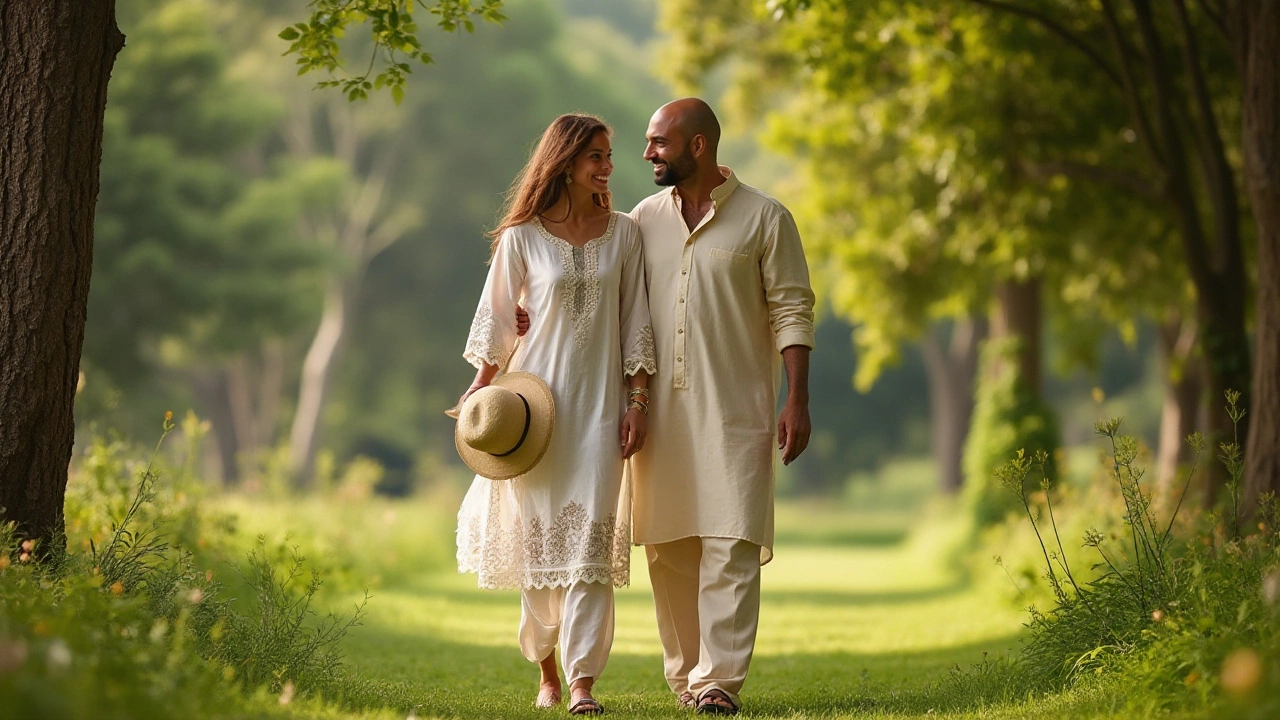
Choosing Appropriate Fabrics and Clothing
When you're planning a trip to India, one crucial aspect to consider is clothing. The country's diverse climate and deep-rooted cultural norms require a thoughtful approach to what you wear. You'll want to focus on garments that not only respect local customs but also provide comfort as you navigate bustling markets and serene temples. Begin with choosing the right fabrics. Cotton is a top candidate, celebrated for its natural breathability, especially in the humid regions of India where the air is thick and relentless. Known for its lightweight nature, this fabric allows your skin to breathe while offering a layer of comfort. For those venturing to the northern parts, particularly in winter, consider layering with light wool or blends for added warmth.
Travel apparel in India should cater to the climate and respect cultural nuances. A simple cotton kurta paired with loose pants offers a smart blend of ease and cultural harmony. These attires not only fit into the local scene but also showcase the rich textures and handcrafted beauty of Indian textiles. Linen, another viable option, shares cotton's cooling properties and brings an elegant drape to your clothing ensemble. It's wise to don outfits that cover the shoulders and knees, especially when visiting religious sites. This maintains a respectful aesthetic and aligns with local expectations.
As the well-traveled author Elizabeth Gilbert noted, "Your body is not your business card. Dress for the breeze, not to please." Her insights remind travelers to center comfort in foreign lands.
Beyond the choice of fabric, considering the style and fit of your clothing is paramount. Indian attire often reflects modesty, which is why many locals steer towards looser-fitting garments that offer ventilation and comfort without clinging to the body. Such styles allow movement and provide relief from heat, a matter of practicality often employed by seasoned travelers. For instance, the salwar kameez, a staple in women's fashion across India, provides an ensemble that is both stylish and accommodating of the climate.
It might also be helpful to embrace the vibrant fabrics and patterns indigenous to India. These aren't just fashion statements; they embody stories, traditions, and a palette richly woven into India's cultural tapestry. When choosing clothes, don't shy away from indulging in the local patterns, often infused with cultural motifs that communicate history and artistry passed down through generations. In terms of practicality, keeping a small shawl or scarf handy can be tremendously useful, not just as an accessory but as a versatile piece to cover the head during temple visits or a makeshift cover against direct sunlight.
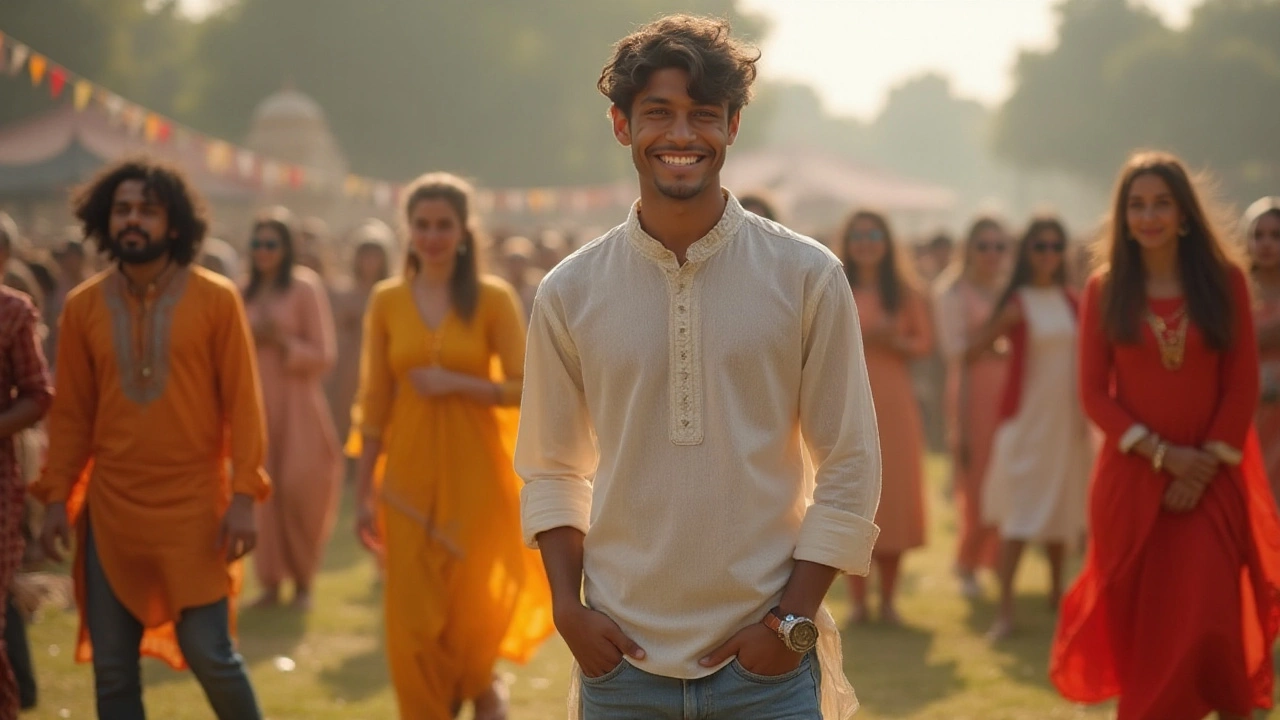
Essential Accessories for Travel
Embarking on a journey to India requires more than just an updated playlist and a fully charged camera. Outfitting yourself with the right American in India fashion accessories can greatly enhance your travel experience, balancing functionality with flair. Navigating through India's myriad landscapes and bustling cityscapes necessitates a keen eye for not only style but also practicality. One accessory that can’t be overstated is a scarf or a shawl. Whether you find yourself gazing at the architectural gem of the Taj Mahal or navigating the bustling streets of Mumbai, a scarf serves multiple purposes. It's not merely a fashion statement; it provides protection against dust, serves as an impromptu cover-up for more modest environments, and offers warmth during cool evenings. A lightweight, versatile shawl is an indispensable item in any traveler's wardrobe.
Next, consider the importance of a small, secure, yet stylish crossbody bag. This may sound straightforward, but its utility cannot be underestimated. Whether you are haggling in the vibrant bazaars or boarding a local train, having a safe, accessible place to store essentials like your phone, money, and travel documents is invaluable. Opt for a bag with RFID blocking features to protect against digital theft, which is becoming increasingly relevant in our tech-savvy world. Comfort should meet style in this accessory, striking a balance that suits your personal taste while offering day-long wearability.
"Practical accessories can make the difference between a trip that’s merely memorable and one that’s absolutely transformative," notes Gina Baron, a seasoned travel expert.
Moreover, think about footwear. A comfortable yet durable pair of shoes can make a significant difference. Whether you're walking up steep hills to an ancient fort or navigating a temple’s stone floors, reliable footwear saves both your feet and your spirit. Soft-soled shoes or sturdy sandals are highly recommended for day-to-day wear, while a slightly dressier pair for evening outings ensures you’re prepared for any situation.
Sunglasses and Hats: Style Meets Function
The sun in India can be both a blessing and a challenge. Equipping yourself with a good pair of sunglasses is not only about style; it's a sensible choice to protect your eyes from the harsh rays. Opt for polarized lenses to reduce glare and enhance visibility. Equally important is a hat. Whether a wide-brimmed piece for ladies or a suave fedora for gentlemen, headgear shields you from sun exposure, reducing the risk of heatstroke while adding an extra layer of intrigue to your outfit. Remember, it's about marrying practicality with presentation.
Technology and Adaptability: The Modern Traveler's Tools
Let's not forget the technological aspect of travels today. Keeping your devices charged in India's diverse accommodations is made easier with a universal power adapter. Given that plug types vary, having a multi-device adapter in your arsenal ensures you're connected, whether in a rural retreat or high-end hotel. And considering India's increasing emphasis on digital payments and navigation, having a power bank in your travel toolkit can be a lifesaver. This handy gadget means your devices stay charged during long journeys without needing an outlet, allowing you to capture memories and navigate with ease.
A well-considered selection of accessories brings together the perfect ensemble for any American exploring the rich tapestry of India. Balancing comfort and culture, function and style, these items ensure you’re prepared for any adventure that comes your way.
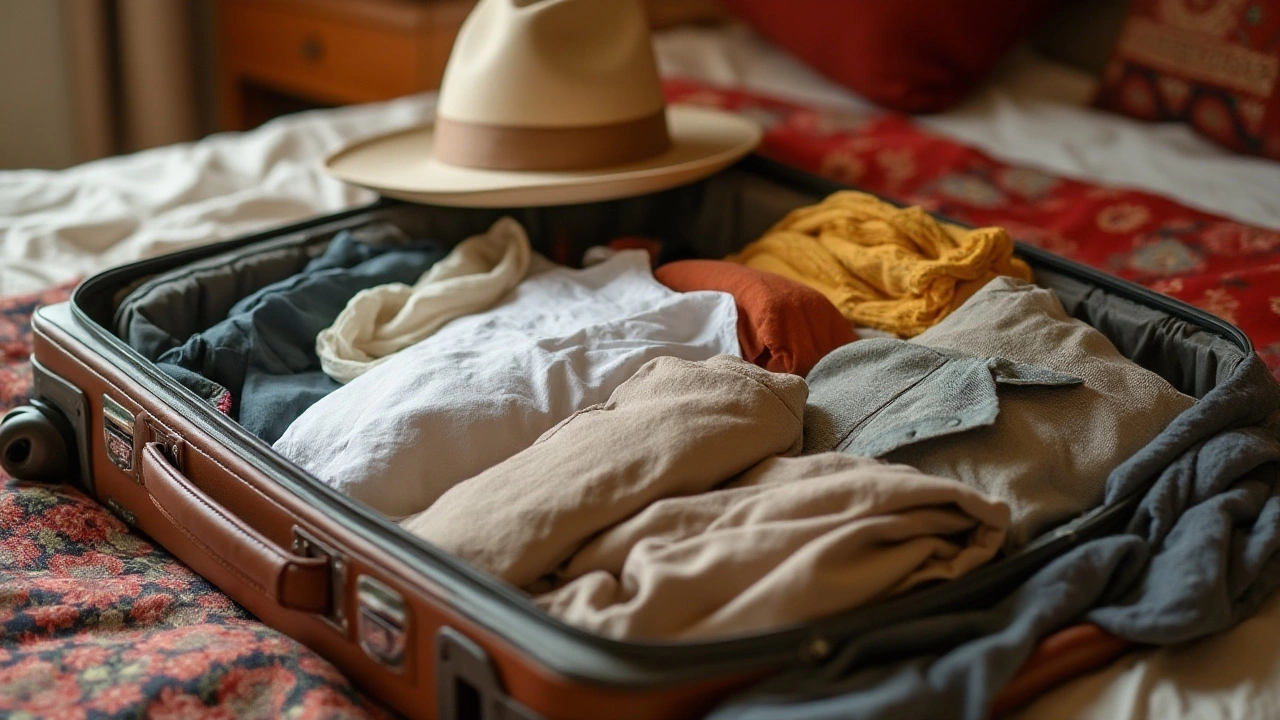
Embracing Local Fashion Trends
Adapting to local fashion trends in India offers travelers an enriching experience, providing a way to blend in with the vibrant culture while showcasing a touch of individual style. Indian attire is famous for its dazzling colors, intricate patterns, and a versatile mix of traditional and contemporary designs. For visitors eager to adopt these trends, it's essential to start with an understanding of the significance behind the clothing. Many of India's fashion choices are rooted deeply in the country's cultural and religious traditions. For instance, sarees and kurta pajamas aren't merely clothing but bear historical and spiritual importance, often associated with ceremonies and rites of passage.
One of the best ways to embrace these fashion trends is by experimenting with kurtas. Kurtas are tunic tops that can be worn by both men and women. Available in cotton, silk, or linen, they are ideal for staying cool in the Indian climate. Pairing them with a pair of leggings or jeans can give you a relaxed yet stylish appearance. Similarly, for men, a kurta paired with traditional pajamas or modern trousers is a common sight at both casual and festive occasions. These outfits are not only stylish but offer comfort and ease, perfect for managing long travels and hectic sightseeing schedules.
For the adventurous fashionistas, trying a saree can be an exciting avenue to explore. Though it may seem daunting at first, the process of draping a saree becomes simpler with practice. The results are often rewarding, transforming the wearer with an aura of elegance. Likewise, the salwar kameez is another popular choice, known for its comfort and adaptability. This outfit, consisting of a tunic, trousers, and a scarf, allows one to effortlessly blend into local environments while providing ease of movement, essential for travelers who may spend long days exploring temples, markets, and bustling city streets.
"Fashion is part of the daily air and it changes all the time, with all the events. You can even see the approaching of a revolution in clothes." – Diana Vreeland
When integrating into local fashion, paying attention to accessories is vital too. India is renowned for its jewelry craftsmanship, with options ranging from intricate gold designs to vibrant beaded necklaces and earrings. These pieces are more than mere decorations; they are tied to India's artistic heritage. For those who might not be fond of jewelry, experimenting with traditional cloth bags or scarves can add an element of local charm to any outfit.
If you're still hesitant about diving headfirst into local trends, consider visiting a local market to gain inspiration. Markets in cities like Jaipur and Mumbai offer a plethora of designs and often provide a glimpse into regional styles unique to each part of the country. Many travelers find that locals appreciate the effort to wear traditional attire, which often leads to engaging conversations and memorable interactions. With so much diversity and creativity in Indian fashion, there's no better way to enhance your travel experience than by embracing the trends that have shaped this magnificent culture.

